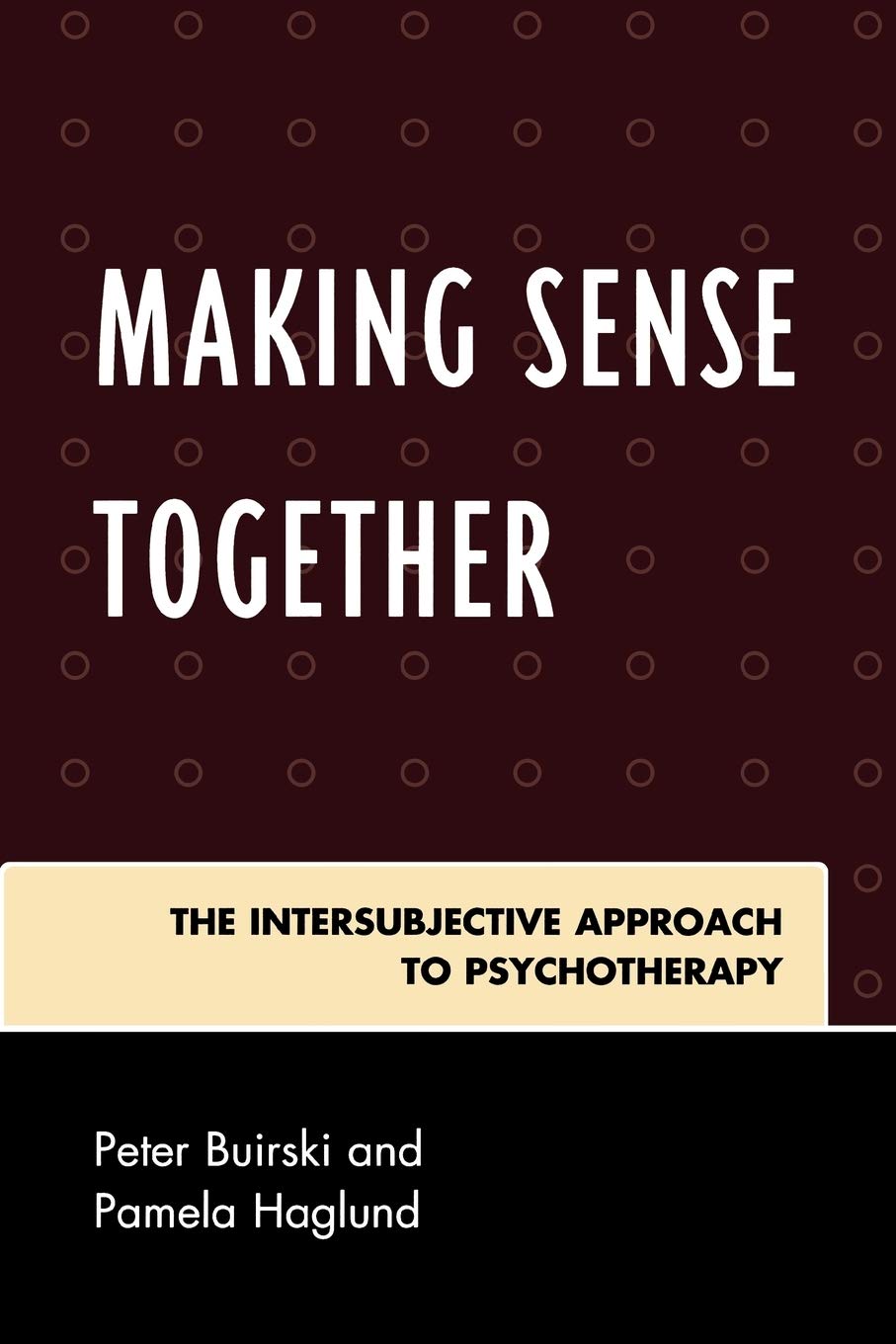
Title



Making Sense Together: The Intersubjective Approach to Psychotherapy,Used
Delivery time: 8-12 business days (International)
As in raising children, in which each unique parent and child pair emerges from the ongoing, mutually influencing relationship, so it is with therapists and patients. Peter Buirski and Pamela Haglund argue that intersubjectivity is founded on two assumptions: First, our momentbymoment experience of ourselves and the world emerges within a dynamic, fluid context of others; and, second, that we can never observe things as they exist in isolation. It follows, then, that therapy is not a search for some objective truth, but what is most helpful is the quality of the relationship constructed in therapy, the personal engagement of patient and therapist. Practicing intersubjectively produces an understanding and appreciation of process. Time pressures or goaldirectedness do not promote unfolding and illuminating. Patients are striving for health, attempting to correct disappointing, destructive, or traumatizing experiences with their original caregivers, and long for an antidote to ward off such painful affects as shame or selfloathing. From the intersubjective perspective, resistance, or attempts to thwart the therapist's efforts, may be seen as healthy striving for selfprotection. Demonstrating these points with vivid clinical examples, Buirski and Haglund discuss the key aspects of the relational model and offer clear and practical guidelines for therapists.
By changing our most important processes and
products, we have already made a big leap forward. This ranges from the
increased use of more sustainable fibers to the use of more
environmentally friendly printing processes to the development of
efficient waste management in our value chain.
⚠️ WARNING (California Proposition 65):
This product may contain chemicals known to the State of California to cause cancer, birth defects, or other reproductive harm.
For more information, please visit www.P65Warnings.ca.gov.
Shipping & Returns
Shipping
We ship your order within 2–3 business days for USA deliveries and 5–8 business days for international shipments. Once your package has been dispatched from our warehouse, you'll receive an email confirmation with a tracking number, allowing you to track the status of your delivery.
Returns
To facilitate a smooth return process, a Return Authorization (RA) Number is required for all returns. Returns without a valid RA number will be declined and may incur additional fees. You can request an RA number within 15 days of the original delivery date. For more details, please refer to our Return & Refund Policy page.
Shipping & Returns
Shipping
We ship your order within 2–3 business days for USA deliveries and 5–8 business days for international shipments. Once your package has been dispatched from our warehouse, you'll receive an email confirmation with a tracking number, allowing you to track the status of your delivery.
Returns
To facilitate a smooth return process, a Return Authorization (RA) Number is required for all returns. Returns without a valid RA number will be declined and may incur additional fees. You can request an RA number within 15 days of the original delivery date. For more details, please refer to our Return & Refund Policy page.
Warranty
We provide a 2-year limited warranty, from the date of purchase for all our products.
If you believe you have received a defective product, or are experiencing any problems with your product, please contact us.
This warranty strictly does not cover damages that arose from negligence, misuse, wear and tear, or not in accordance with product instructions (dropping the product, etc.).
Warranty
We provide a 2-year limited warranty, from the date of purchase for all our products.
If you believe you have received a defective product, or are experiencing any problems with your product, please contact us.
This warranty strictly does not cover damages that arose from negligence, misuse, wear and tear, or not in accordance with product instructions (dropping the product, etc.).
Secure Payment
Your payment information is processed securely. We do not store credit card details nor have access to your credit card information.
We accept payments with :
Visa, MasterCard, American Express, Paypal, Shopify Payments, Shop Pay and more.
Secure Payment
Your payment information is processed securely. We do not store credit card details nor have access to your credit card information.
We accept payments with :
Visa, MasterCard, American Express, Paypal, Shopify Payments, Shop Pay and more.
Related Products
You may also like
Frequently Asked Questions
- Q: What is the main focus of 'Making Sense Together'? A: 'Making Sense Together' focuses on the intersubjective approach to psychotherapy, highlighting the importance of the therapeutic relationship between therapist and patient.
- Q: Who are the authors of this book? A: The book is authored by Peter Buirski and Pamela Haglund.
- Q: How many pages does the book have? A: The book contains 282 pages.
- Q: What type of binding does this book have? A: This book is available in paperback binding.
- Q: When was 'Making Sense Together' published? A: 'Making Sense Together' was published on November 16, 2009.
- Q: What condition is the used book in? A: The book is listed as a used book in good condition.
- Q: What key concepts does the book explore? A: The book explores key concepts such as intersubjectivity, the relational model in therapy, and the significance of the therapist-patient relationship.
- Q: Is this book suitable for novice therapists? A: Yes, the book provides clear and practical guidelines that can benefit novice therapists as well as experienced practitioners.
- Q: Does the book include clinical examples? A: Yes, it includes vivid clinical examples to illustrate the concepts discussed.
- Q: What can readers expect to learn from this book? A: Readers can expect to learn about the dynamics of therapeutic relationships and how to foster effective engagement in therapy.
